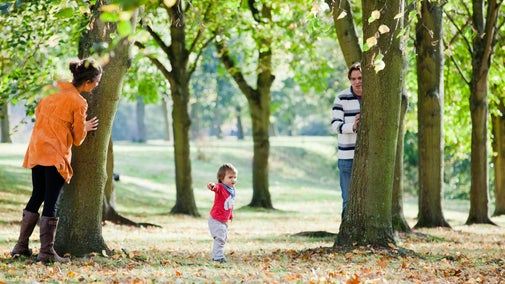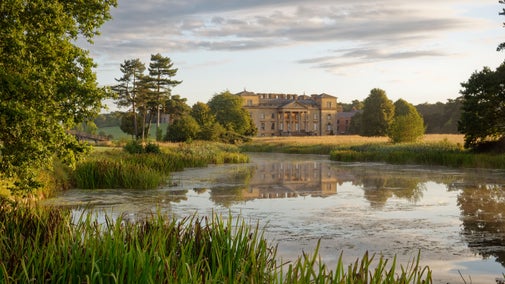
Discover more at Cliveden
Find out when Cliveden is open, how to get here, the things to see and do and more.

Every spring and summer the floral planting on the Parterre provides a colourful spectacle. The six-acre Parterre is one of the garden’s most dramatic features. Comprising of 16 triangular beds with box hedging and manicured yew topiary, as well as a sweeping semi-circle bed on the North end.
The spring displays are a mixture of bulbs and bedding plants – over 30,000 bulbs or plants to be precise. All these plants are then removed in the autumn, and the beds replanted for spring and summer with a further 30,000 plants.
There are 12 full-time gardeners and over 40 volunteers who freely give their time to help in the garden. When it comes to changing over the displays it’s all hands to the Parterre for 15 days of intensive, back-breaking work.
Keeping the Parterre’s lawns tidy and the beds free of weeds is hundreds of hours more. The gardeners spend 18 hours a week just cutting the grass inside the beds in the height of the season.

As well as the changeover of flowering plants there are over 2.5 miles of hedges and 18 topiary pyramids to keep trim. The Parterre hedging and obelisks are cut and to look sharp and at their best between September and November.
The process of ‘stringing out’ to ensure neat edges is a task that must be done with care and precision. It’s a satisfying task for the garden team to see those fantastic symmetrically cut sides and spirit-level-straight tops. It’s a job that usually takes between two and three weeks. Each year in excess of 4.86 km of hedges are cut, which is the equivalent of 14.575 km as both sides of the hedge and its top are cut.
There are several special Rhododendrons at Cliveden. In some cases, they come to the natural end of their life and it’s important to create new plants from the original before this happens. The best way of creating identical copies of the original is either through cuttings, or ‘layering’. However, taking cuttings from Rhododendron can be difficult, and may not produce the best results. Layering another method, which takes longer but produces higher success rates.
The McCabe Rhododendron (R. macabeanum) is a large, old specimen located at Cliveden. It has been deteriorating for the past few years and is unsuited in its current location.
When layering a Rhododendron, low branches are normally used in order to reach the ground easily for rooting. But the McCabe Rhododendron had only one high branch left, so this approach was unfeasible. The ‘air layering’ method was chosen instead.
As with normal layering, the stem/wood of the plant is scored or wounded to induce new roots to form; then treated with rooting hormone and wrapped in a growth medium, like moss or compost. The main benefit of layering is that the cutting is still connected to the mother plant, which is less stressful to the new plant and gives more time for roots to develop. While this is not a common form of propagation, it is useful for saving prized plants that would otherwise be lost.
Cliveden’s meadows are carefully managed to ensure they support a diverse range of plants. Cutting of the meadows takes place from late July. Cut grass is always removed as this aids the many wildflowers present and helps prevent the aggressive grasses from becoming too dominant.
Several different orchids have been identified growing in the long grass, including the pyramidal orchid Anacamptis pyramidalis and the bee orchid Ophrys apifera. Pyramidal orchids grow in great quantities at Cliveden, whilst the common spotted and bee orchids are fewer in number.

Find out when Cliveden is open, how to get here, the things to see and do and more.
Discover the background and history of some of the main features in the garden at Cliveden and who was responsible for commissioning and designing them.

Discover more details about the conservation projects carried out over the past few years to look after the Grade I listed garden and house at Cliveden.
For over 300 years Cliveden was home to dukes, earls, viscounts and even a prince. Learn how it became a glittering hub for exclusive parties and political gatherings.

If you’re looking to get the whole family outside this autumn look no further.

We believe that nature, beauty and history are for everyone. That’s why we’re supporting wildlife, protecting historic sites and more. Find out about our work.

Read about our strategy, which focuses on restoring nature, ending unequal access and inspiring more people.
